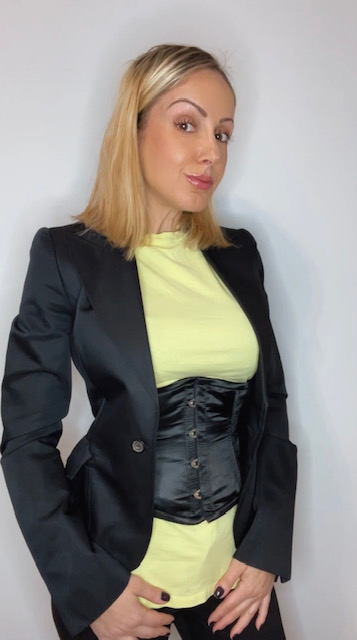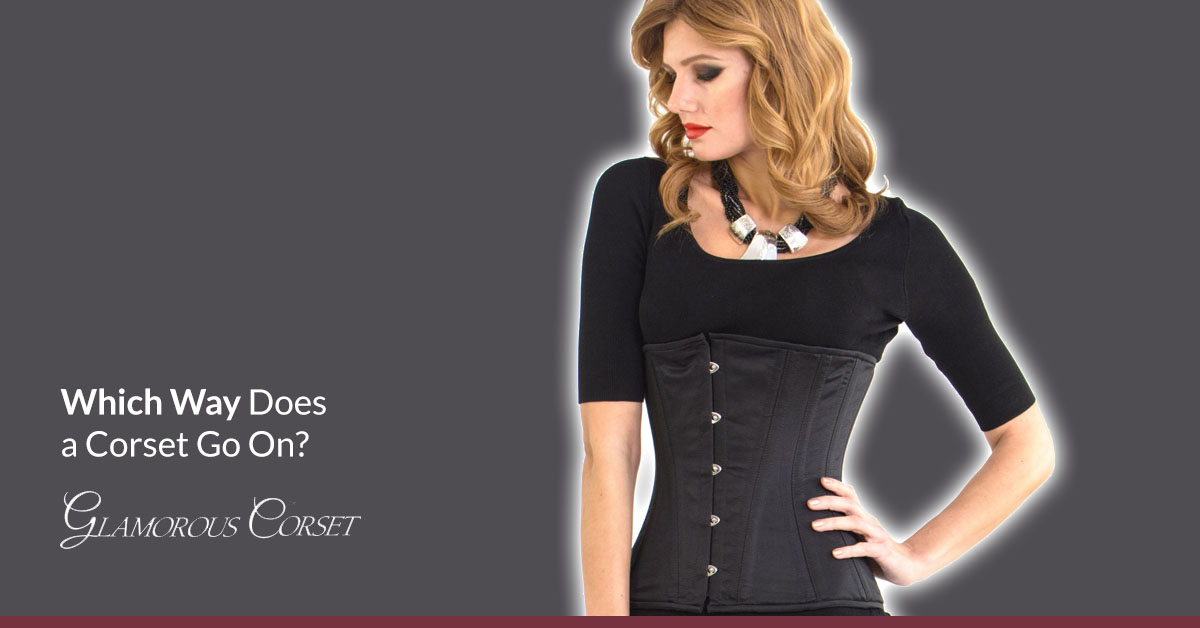Blog
Which Way Does a Corset Go On?
Featured Corset: Kelly Black Satin Corset
Modern clothing can be confusing, to say the least. Have you ever put on a stylishly shredded shirt only to discover you have no idea where the holes for the head and arms are? No, just me? How about the haute couture sweaters that seem to have a dozen arms attached?
Fashion foibles aside, it’s not always clear how clothing is supposed to go on the body, and while corsets seem pretty straightforward, you wouldn’t be the first person to put one on backward or upside down. Which way does a corset go on? Here are a few tips to get it right.
Busks Go in Front
Let’s start with the basics. A corset features two closures: lacing on one side and steel busks, or a row of pegs and a row of loops that slot together, on the other side. The lacing goes in the back while the busks offer an easy way to get in and out of your corset when the laces are loosened. It can also be a quick-release mechanism in an emergency, although it isn’t generally recommended to release busks when a corset is snug.
Look for a Label
Most corsets feature a maker’s label, and it will be located topside on the corset, typically sewed into a back edge near the grommets. If you find that you’ve been wearing the label along the bottom edge, it’s time to flip your corset and wear it right-side up.
Check for Suspender/Garter Loops
Not all corsets have loops sewn in to attach suspenders or garter straps, but if they do, you’ll find them along the bottom edge. Suspenders, when attached, will hang down to connect with thigh-high stockings.
Reference a Placket
Okay, now we’re whipping out the five-dollar words. Unless you work in the garment industry, you might not know that the strips running down the front of a button shirt, one side featuring buttons and one side with buttonholes, are called plackets.
If all else fails (you’ve cut off the tag for comfort and your corset has no suspender loops), you can tell which side is up by referencing a placket on a shirt. Make sure to look at a woman’s shirt, though. While the buttons on a woman’s shirt are on the left side placket (when the shirt is on the body), they’re inexplicably on the other side for men. In other words, the busk with pegs should be on the left side, while the busk with loops should be on the right.
Which Way Does a Corset Go On – Ignoring the Rules
Okay, obviously, we recommend wearing a corset in its intended position, but there are cases in which you might want to switch it up. Oftentimes, corsets are wider on the bottom to account for hips, but if you have slim hips and a wider ribcage, you might feel more comfortable flipping the script, so to speak, and wearing your corset upside down. Ideally, you’d spring for a custom corset to fit your frame, but this can be costly.
Donning a corset properly usually leads to the greatest comfort and helps to ensure garment longevity, but if you feel more comfortable wearing your corset wrongways, well, you do you.
To stay up-to-date with weekly blog posts, waist training tips, and the chance to win one of our monthly corset giveaways, follow us on Facebook, Instagram & subscribe to our mailing list today! Want to find the perfect steel boned corset? Shop some of our favorites: underbust corsets, overbust corsets, corset dresses. You can also shop our corsets by material: cotton corsets, denim corsets, leather corsets, mesh corsets, pvc corsets, and satin corsets. Have questions about getting started with waist training or finding the right size corset? Contact us!

My name is Rachel, I am the owner of Glamorous Corset, a small business founded by me in 2010. Back In 2005, I was in a car accident that left me with a herniated disk. Much to my surprise I learned steel boned corsets were beneficial to several medical injuries including mine. I was always intrigued with corsetry, their history and their beautiful aesthetic. I love sharing knowledge about corsets, educating my wonderful readers and breaking the negative stigma related to corsetry. In combination with my years of research and personal experience I hope my articles are useful and can help anyone who has struggled with some of the same things I have. More about me…


